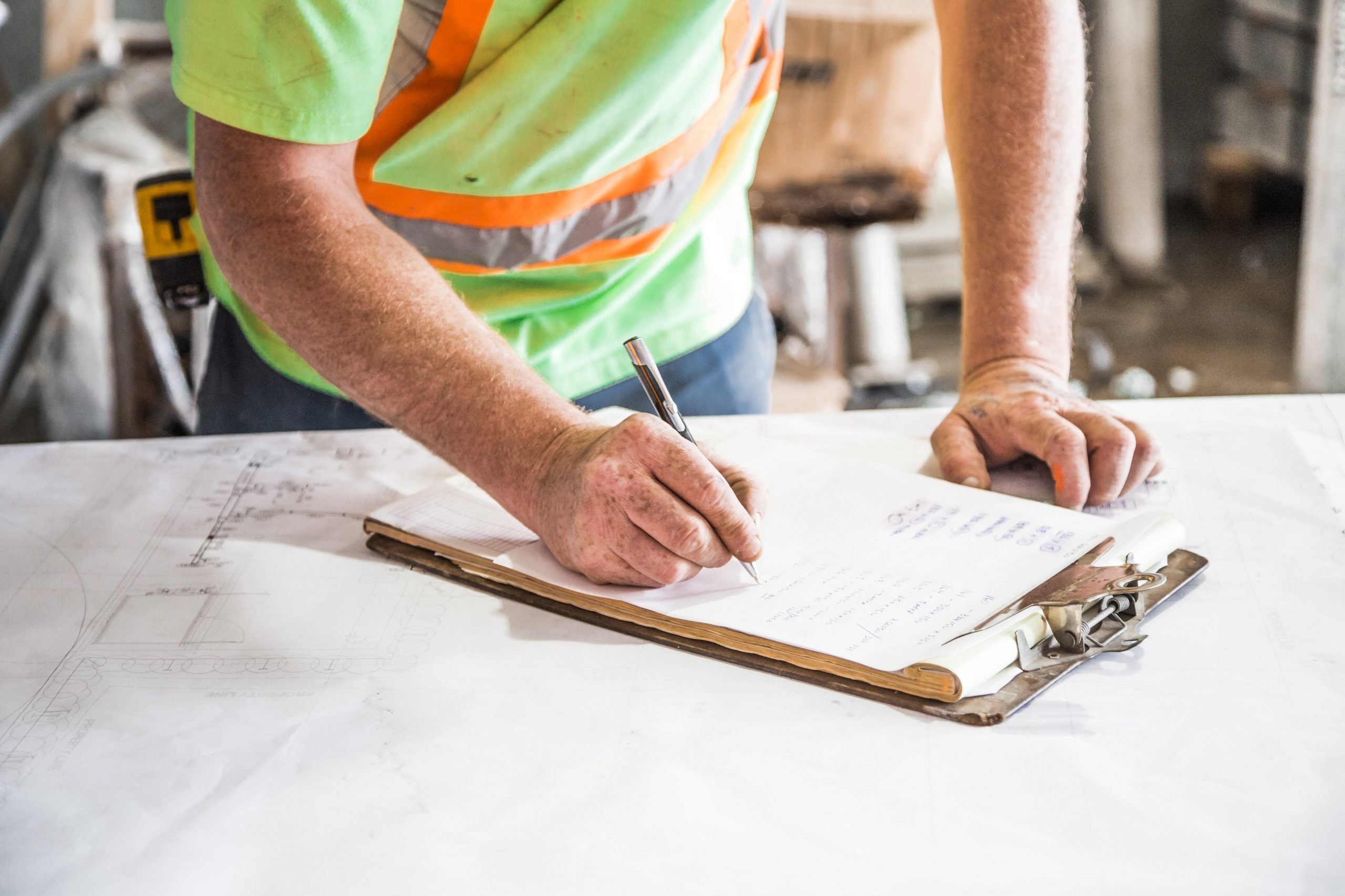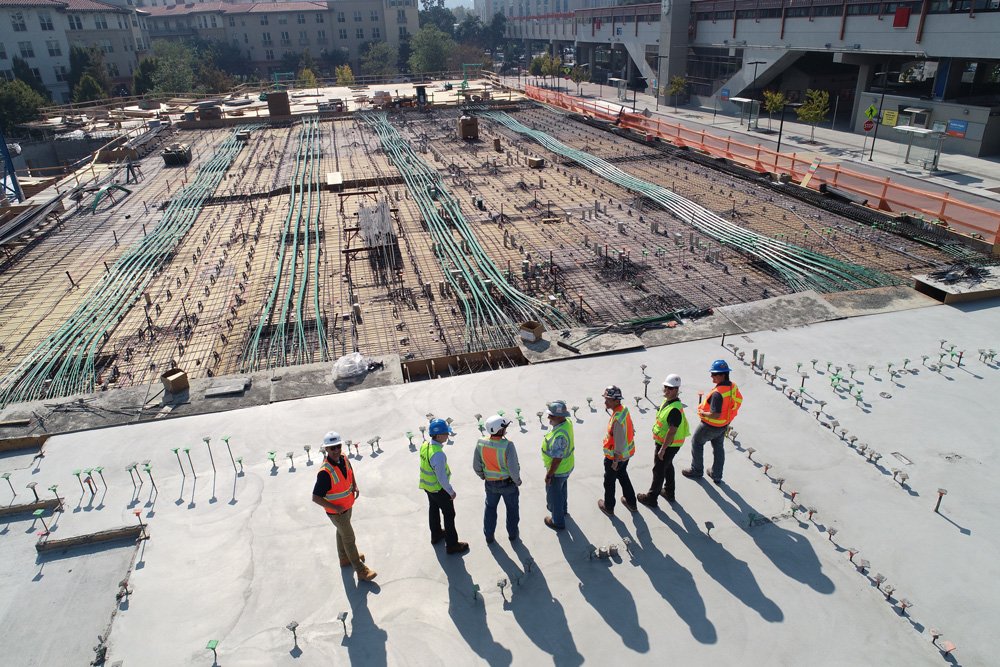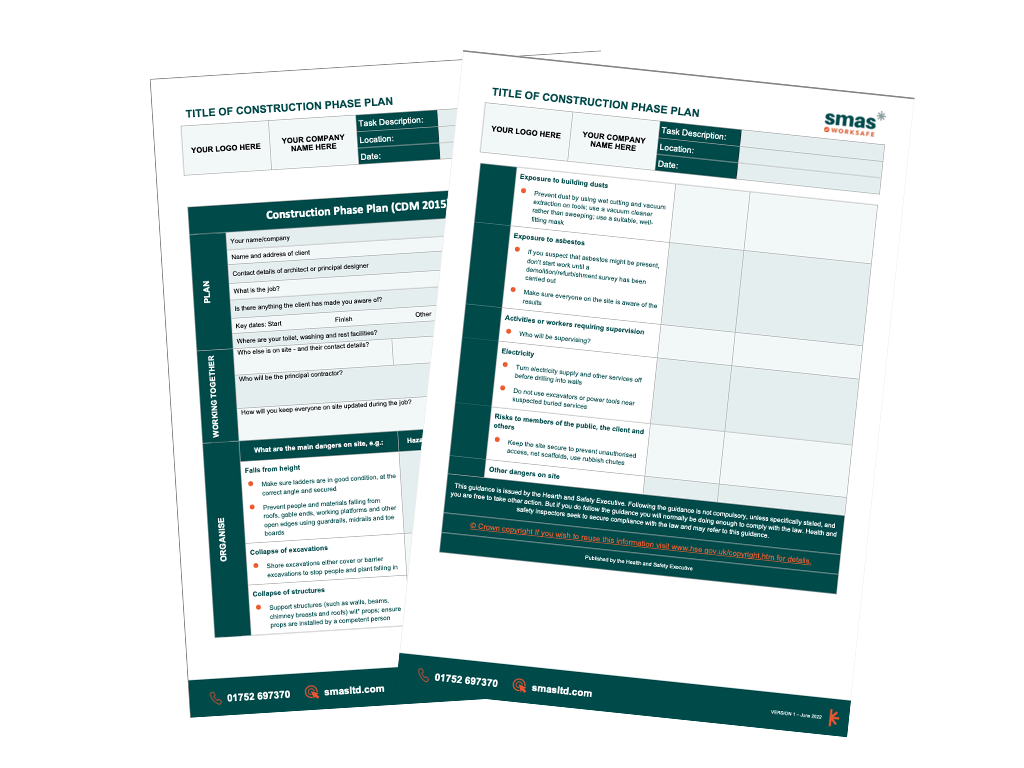A construction phase plan (CPP) is a required document for all construction sites and should be proportional to the size or duration of the project. Today, we will explore what a Construction Phase Plan is, its key elements, and why it’s so important for business success.
A Construction Phase Plan (CPP) is a vital Health & Safety document used to ensure that construction projects are carried out in a safe and compliant manner. As part of schedule 3 of the Construction (Design & Management) (CDM) Regulations 2015, the CPP outlines the safety arrangements, site rules, and specific precautions required for managing risks on-site. This includes identifying hazards such as working near high-voltage power lines, operating heavy machinery, or dealing with hazardous materials.
The information within a Construction Phase Plan must be tailored to the specific tasks and risks associated with the project. It is not a one-size-fits-all document. Instead, it should reflect the unique conditions of the site and the work being carried out. This includes referencing details from the pre-construction information plan, which provides essential background on site-specific health and safety risks, such as the location of existing structures or potential environmental hazards.
Under the Construction (Design & Management) (CDM) Regulations 2015, if you are the sole contractor or the principal contractor for a construction project, you are legally required to create a Construction Phase Plan (CPP). The level of detail required in the plan will depend on the size, complexity, and duration of the project.
For smaller projects, the Construction Phase Plan may not need to be as detailed as it would for a large-scale construction site. However, even for smaller projects, it’s important to have clear evidence that Health & Safety measures have been properly considered and coordinated. This includes making sure that safety arrangements are in place and communicated effectively to all members of the project team, from contractors to subcontractors.
The main coordinator of the Construction Phase Plan will be the contractor or the designated principal contractor—if there is more than one on-site.
However, as this is a legally required document, the responsibility for its production also falls to the client. The principal designer and designers working on the project will also be responsible for providing all the relevant information which the contractor will need to create an exhaustive CPP.
Therefore, though the principal contractor is responsible for the management of the work, there must be cooperation between the key site decision-makers for the document to be completed in full.

A CPP should include the following details below, along with any other information relevant to the specific project it is being drafted for.
Work on a construction project cannot begin until the Construction Phase Plan (CPP) is prepared, meaning the principal contractor must ensure it is completed before any construction activities start. However, the CPP typically contains answers to problems identified in the pre-construction information plan. As such, the contractor may need to complete this first before drawing up the CPP.
Depending on the nature of the work, some details of the project may not be certain or finalised when work is due to begin. Because of this, the Construction Phase Plan should be treated as a live document, regularly updated as new information becomes available or details previously unclear are clarified and assessed. While smaller projects may not require frequent updates, the CPP should be revised if there are any significant changes to the plans or schedule to ensure it remains accurate and reflects the current scope of work.

The Construction (Design and Management) Regulations 2015 aims to improve the safety of those who work in construction, no matter your role.
In 2015, CDM regulations were updated and the Construction Phase Plan was made a requirement for all construction projects and not just larger-scale projects. This includes:
Schedule 3 of the CDM 2015 also requires the CPP to include specific consideration for works relating to a few safety risks, including:

Download our FREE Construction Phase Plan Template today. This will guide you through the process, helping you create a comprehensive plan tailored to your specific project needs.
Whether you’re managing a large construction site or a smaller project, our Construction Phase Plan template will make sure that all necessary safety measures and protocols are clearly outlined, keeping your team and project on track.
We also offer a range of CITB-approved training courses to help you upskill and advance your career, including:
Additionally, we provide SSIP packages for contractors and businesses, allowing you to gain quick and easy certification. Demonstrate your commitment to Health & Safety, gain credibility with clients, and enjoy direct access to our team of in-house experts.
For more information, request a quote or give us a call at 01752 280183 and our team will be happy to help.
